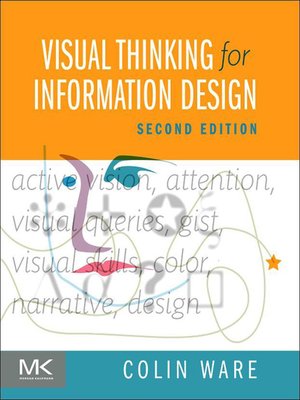
Sign up to save your library
With an OverDrive account, you can save your favorite libraries for at-a-glance information about availability. Find out more about OverDrive accounts.
Find this title in Libby, the library reading app by OverDrive.



Search for a digital library with this title
Title found at these libraries:
| Library Name | Distance |
|---|---|
| Loading... |
Visual Thinking for Information Design, Second Edition brings the science of perception to the art of design. The book takes what we now know about perception, cognition and attention and transforms it into concrete advice that students and designers can directly apply. It demonstrates how designs can be considered as tools for cognition and extensions of the viewer's brain in much the same way that a hammer is an extension of the user's hand. The book includes hundreds of examples, many in the form of integrated text and full-color diagrams.
Renamed from the first edition, Visual Thinking for Design, to more accurately reflect its focus on infographics, this timely revision has been updated throughout and includes more content on pattern perception, the addition of new material illustrating color assimilation, and a new chapter devoted to communicating ideas through images. - Presents visual thinking as a complex process that can be supported in every stage using specific design techniques - Provides practical, task-oriented information for designers and software developers charged with design responsibilities - Includes hundreds of examples, many in the form of integrated text and full-color diagrams - Steeped in the principles of "active vision, which views graphic designs as cognitive tools - Features a new chapter titled Communicating Ideas with Images that focuses on a new emerging theory of human cognition and how that theory, which deals with the construction and refinement of predictive mental models in the mind, provides a solid foundation for reasoning about what should go into a presentation







